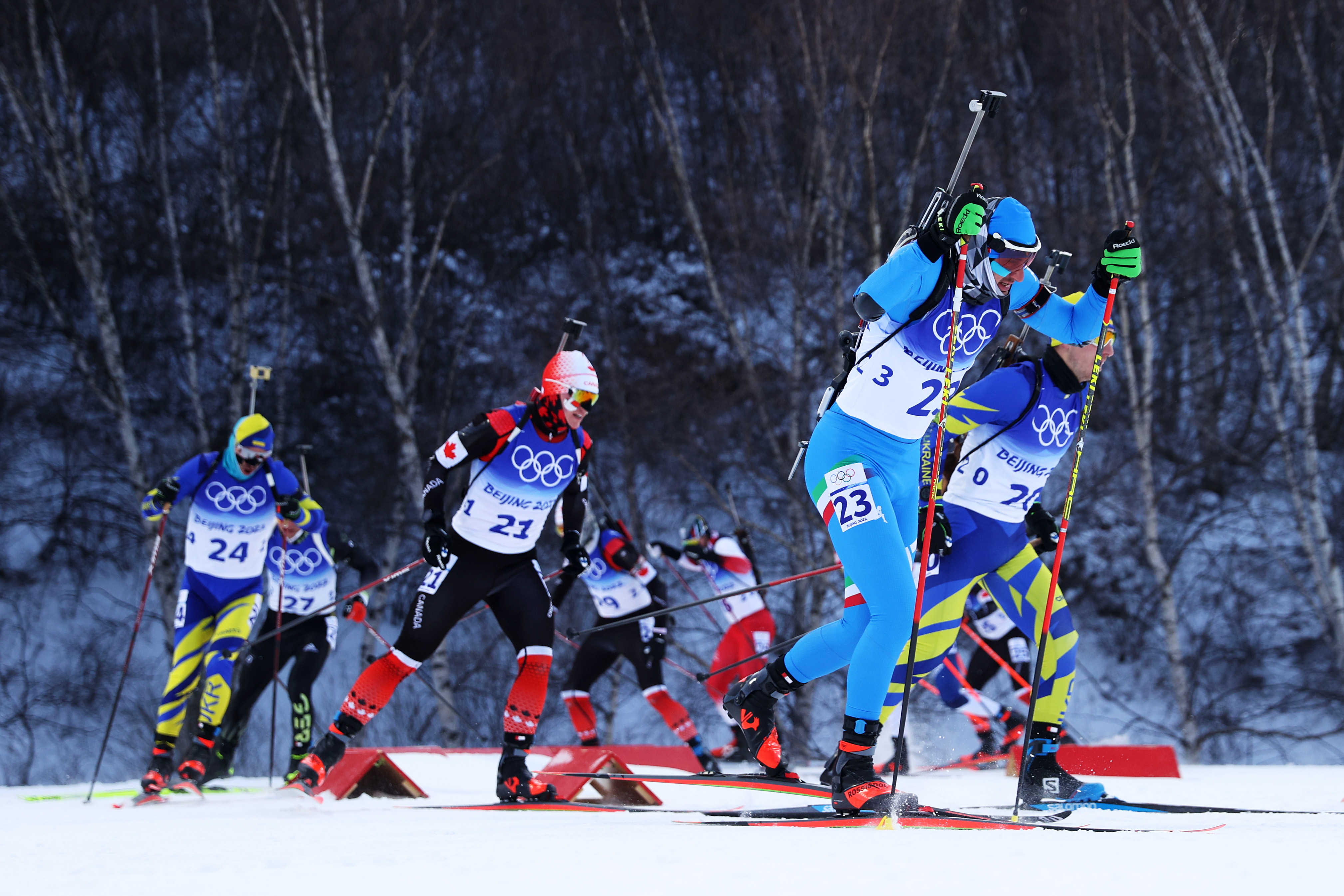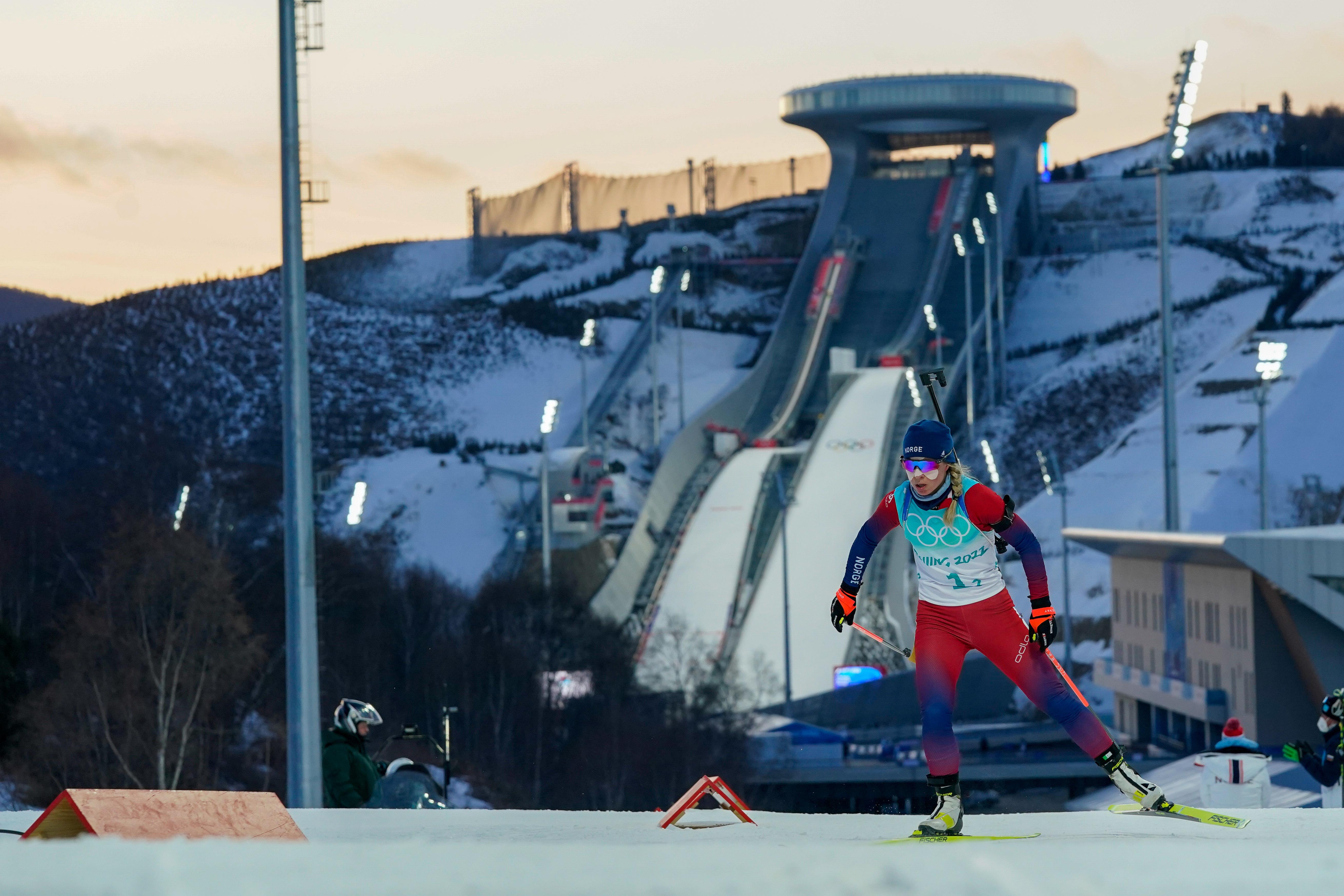The perfect combination of technique, physical endurance and precision, biathlon is one of the most popular winter sports, ready to impress at Milano Cortina 2026
The explosiveness and competitive nastiness of cross-country skiing, combined with the precision and calm of shooting: biathlon is all this, and much more. This winter sport is enjoying increasing popularity, especially in Italy, where a significant segment of wild fans has grown as of late, ready to applaud the exploits of their favourite athletes from the packed stands.
Even though the dynamics are not particularly intuitive at first glance, Fan26 is here to explain the rules of this fascinating sport: let's find out together!
Basic rules
Biathlon includes two competitions in one: rifle shooting and cross-country skiing, a mix that makes this discipline suspenseful, with leads that can turned around unexpectedly, in the blink of an eye.
The freestyle cross-country skiing part takes place on a ring track to be completed several times, based on the competition's length; at each round, the athletes compete also at the shooting range, first in the standing position, and then in the prone position, by firing 5 shots (the number of rounds varies, according to the speciality). There are two target diameters: 45 mm for the prone position and 115 mm for the standing position, placed 50 m from the firing line.
A missed target results in a penalty: skiing around a 150 m penalty loop, or 1 minute added to the overall time (in individual races). The winner is whoever covers the course in the shortest possible time. Therefore, apart from being the fastest, athletes also need to be the most precise and resistant on the track: a complete discipline!
Biathlon competition equipment includes: cross-country skis (normal, weighing approximately 1250 g and about 5 cm wide) and a carbine, which, introduced in 1978, is a light, small-calibre rifle, weighing between 3.5 and 6 kg, that can only be shot manually.
The shooting range is equipped with 30 shooting lanes. Athletes shoot at five targets per lane, placed at a distance of 50 m. Since the mid-1990s, a computerised system with electromechanical targets and automatic recording of hits has been introduced. When the bullet hits the black target, a pulse triggered by a special sensor places a white plate in front of it, thus signalling the successful hit.
Competition formats
The competitions at Milano Cortina 2026 will see athletes compete in five race formats: sprint, pursuit, individual, relay and mass start.
Sprint: As the name suggests, speed is key in this speciality. Athletes start at set time intervals between one another (usually 30″) and have to cover three laps (2.5 km long for women and 3.3 km for men) as quickly as possible, with a shooting session in the prone position (between the first and second laps) and one in the standing position (between the second and third laps). In this speciality, skills such as quickness in positioning on the piste and delivering shots between targets are also very important, as is precision. A shooting error in the sprint does not only preclude the possibility of winning the individual race - unless the athlete's narrow ski performance is far better than that of more accurate opponents on the shooting range -, but it could even affect the next competition…
Pursuit: Race with interval start, and whoever crosses the finish line first wins. The circuit is shorter than a sprint, with five laps and four shooting ranges. In this speciality, the leads from the previous sprint are maintained at start. In this way, the winner of the previous race starts first, followed by the runner-up with a time interval equivalent to the seconds of disadvantage accumulated in the previous race, and so on. Athletes who were more than four minutes behind start together, exactly 240 seconds behind the first, with the remaining delay being added when the race is over.
The chances of making mistakes on twice as many targets (20 instead of the sprint's 10) increase. Mental, range and energy management skills are essential to succeed in this speciality, even for those who start in the lead. Also, the more targets the athletes miss, the more metres they need to cover. And this is why great recoveries are very common.
Individual: It is the most extreme race format, as the total course to be completed (with a whooping five laps!) is significantly longer than in all other specialities. For this reason, good endurance is required, in addition to being fast on narrow skis. The uniqueness of this format lies in the penalties for each shooting error, which result in the addition of one minute to the actual time, instead of one penalty lap, punishing those who are less accurate or too hasty more severely. Consequently, this type of competition is meant for complete athletes. The other particularity concerns the shooting range sequence, which alternates prone and standing positions. The athletes start at regular intervals and whoever sets the best time wins.
Mass start: As the name suggests, all athletes start together, therefore the number of participants is limited, due to the small number of shooting ranges available at the same time. Therefore, in major events, only the best ranked and the fittest athletes take part in it. Compared to the pursuit, the circuit to be covered is half a kilometre longer, but the first lap is tackled in close ranks, and at a more leisurely pace, as it is extremely difficult to sprint forward alone, and it is wiser to save all the efforts for the final, decisive laps, a bit like in cycling races. The exhausting mental stamina required throughout the race means that in this speciality you can witness some of the most incredible and spectacular race finishes ever.
Relays: All relays involve a line start, one prone and one standing shooting session per leg, and the 'passing of the baton' - based on a simple touch between relay athletes - in a defined area of the course. One of the peculiarities that makes these competitions unique in their own way is the option to use three (non-cumulative) reloads per shooting session, in order to cover any missed targets with the first five shots available and avoid penalty laps. However, inserting the cartridge into the magazine, repositioning and re-aiming can make you lose precious seconds (with the estimated average manual reloading time being around 10″). Relays are divided into: men's and women's relay (four athletes of the same gender), mixed relay (two men and two women) and single mixed or single relay (one man and one woman).

Dominik Windisch, Italy, Biathlon, Olympic Winter Games Beijing 2022
At the next Olympic Winter Games, there will be 11 biathlon events:
Men: 10 km sprint, 20 km individual, 12.5 km pursuit, 15 km mass start and 4 x 7.5 km relay.
Women: 7.5 km sprint, 15 km individual, 10 km pursuit, 12.5 km mass start and 4 x 6 km relay
Mixed: 4 x 6 km relay
Now that you are real experts, you are ready to enjoy the spectacular biathlon!












































































